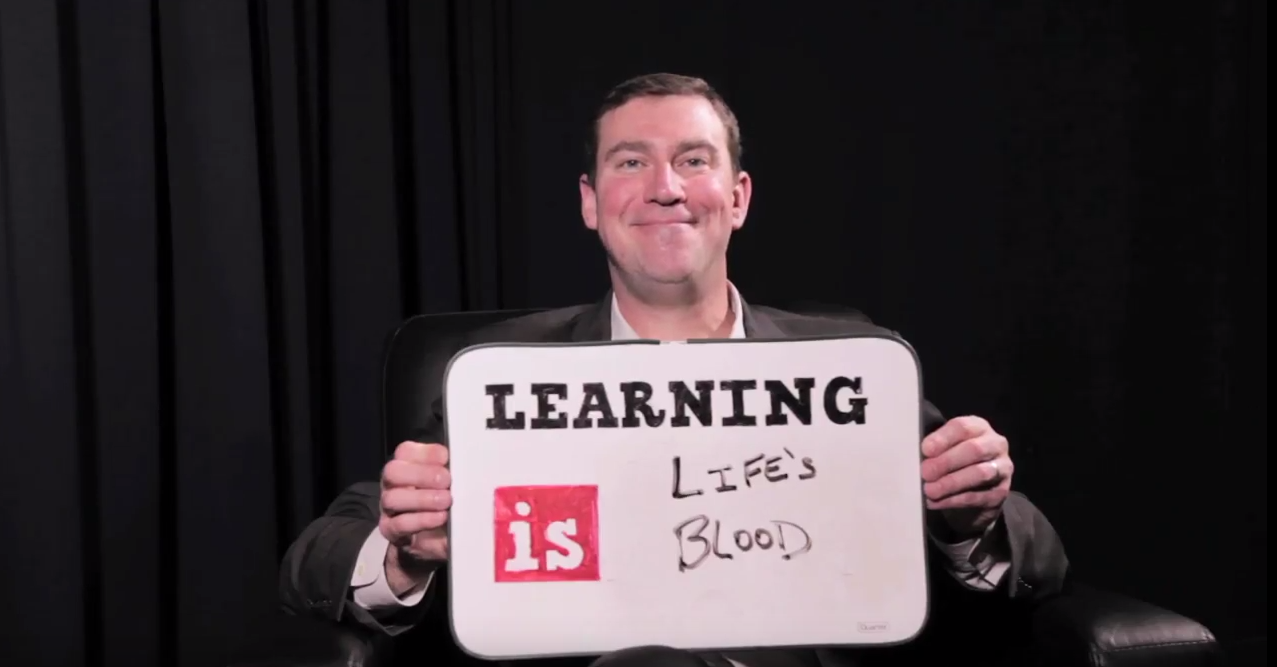



by Larry Cornett, Ph.D. for Medium Magazine
 A number of people who have hit a promotion ceiling in their careers tell me that they’ve received feedback that they are “lacking executive presence.” Understandably, they are frustrated by this criticism because it is such a cop-out.
A number of people who have hit a promotion ceiling in their careers tell me that they’ve received feedback that they are “lacking executive presence.” Understandably, they are frustrated by this criticism because it is such a cop-out.
It is a catch-all phrase that is meant to capture a myriad issues when managers can’t be pinned down. But, I’ve been in innumerable employee review meetings from the leadership side of the table. I also work with managers who are trying to coach their direct reports through this “executive presence problem.” What I’ve learned is that they are often dissatisfied with one or more of the following issues: Read More
 If you know anything at all about improvisation, it’s likely to be the phrase “Yes, and….” Those two words — shorthand for acknowledging an idea and then adding to it — are the cornerstone of improvisation, according to Bob Kulhan, founder and CEO of the consulting company Business Improv.
If you know anything at all about improvisation, it’s likely to be the phrase “Yes, and….” Those two words — shorthand for acknowledging an idea and then adding to it — are the cornerstone of improvisation, according to Bob Kulhan, founder and CEO of the consulting company Business Improv.
But many people — including myself, I discovered — also have misconceptions about improvisation, including thinking that it’s inherently creative, or a group exercise in, as Kulhan puts it, “making stuff up as a last resort.” “It’s not comedy,” said Kulhan, a co-founder of the New York City–based improv ensemble Baby Wants Candy and an adjunct professor at Duke University’s Fuqua School of Business and Columbia Business School. Read More

Bob Kulhan is the Founder, President and CEO of Business Improv®, a world-class leader in creating experiential training and development programs for corporations of all scopes and sizes. Kulhan is also the author of Getting to “Yes And”: The Art of Business Improv, and serves as an Adjunct Professor at the Duke University Fuqua School of Business and Columbia Business School at Columbia University and teaches regularly as part of the Executive Education programs at the UCLA Anderson School of Management.
The following text is an excerpt from GETTING TO “YES AND”: THE ART OF BUSINESS IMPROV by Bob Kulhan with Chuck Crisafulli.
 WHAT EXACTLY DOES IMPROVISATION have to do with business? Think about the major trends in the business world. Emerging technology continues to increase the speed of business. Moreover technology itself continues to change at an accelerated pace (Moore’s Law purports a doubling of processing speeds every two years).1 Business now relies on instantaneous, 24-hour communication as well as remote access to vital information, and any business that has trouble communicating that way is considered to be at a severe disadvantage.
WHAT EXACTLY DOES IMPROVISATION have to do with business? Think about the major trends in the business world. Emerging technology continues to increase the speed of business. Moreover technology itself continues to change at an accelerated pace (Moore’s Law purports a doubling of processing speeds every two years).1 Business now relies on instantaneous, 24-hour communication as well as remote access to vital information, and any business that has trouble communicating that way is considered to be at a severe disadvantage.
The global community—corporate, consumer, and geographic—is upon us, and adopting new methodologies for effective communication and collaboration must take place between and across cultures.2 Even within individual workplaces the potential for diversity in perspectives— the probability that those around us see things differently than we see things—is greater than ever before and must now be factored in to how business gets done. Put it this way: reacting, adapting, and communicating are not a matter of choice for businesspeople; they’re a matter of basic survival. This has always been so, but in today’s environment the stakes are higher. Read More
Do you feel like a failure? Bob Kulhan shares with us how he has overcome this thought by facing his fears. Listen in now.

In this episode, I speak with Bob Kulhan, President, CEO, and Founder of Business Improv, an innovative consultancy that specializes in experiential learning and serves an international roster of blue-chip firms. He is also an Adjunct Professor at Duke University’s Fuqua School of Business and Columbia Business School. A performer with over 20 years of stage credits, he has trained with a long list of legendary talents, including Tina Fey and Amy Poehler. An actor and former core faculty member in Chicago’s famed Second City and a member of the former resident company at the iO Theater, Kulhan is a co-founder of the critically acclaimed Baby Wants Candy improv troupe. His work has been featured by such outlets as Big Think, CNN, Entrepreneur, Fast Company, the Financial Times, NPR, Slate, and the Wall Street Journal. He lives in New York. B-roll, video and workshop access available. Read More